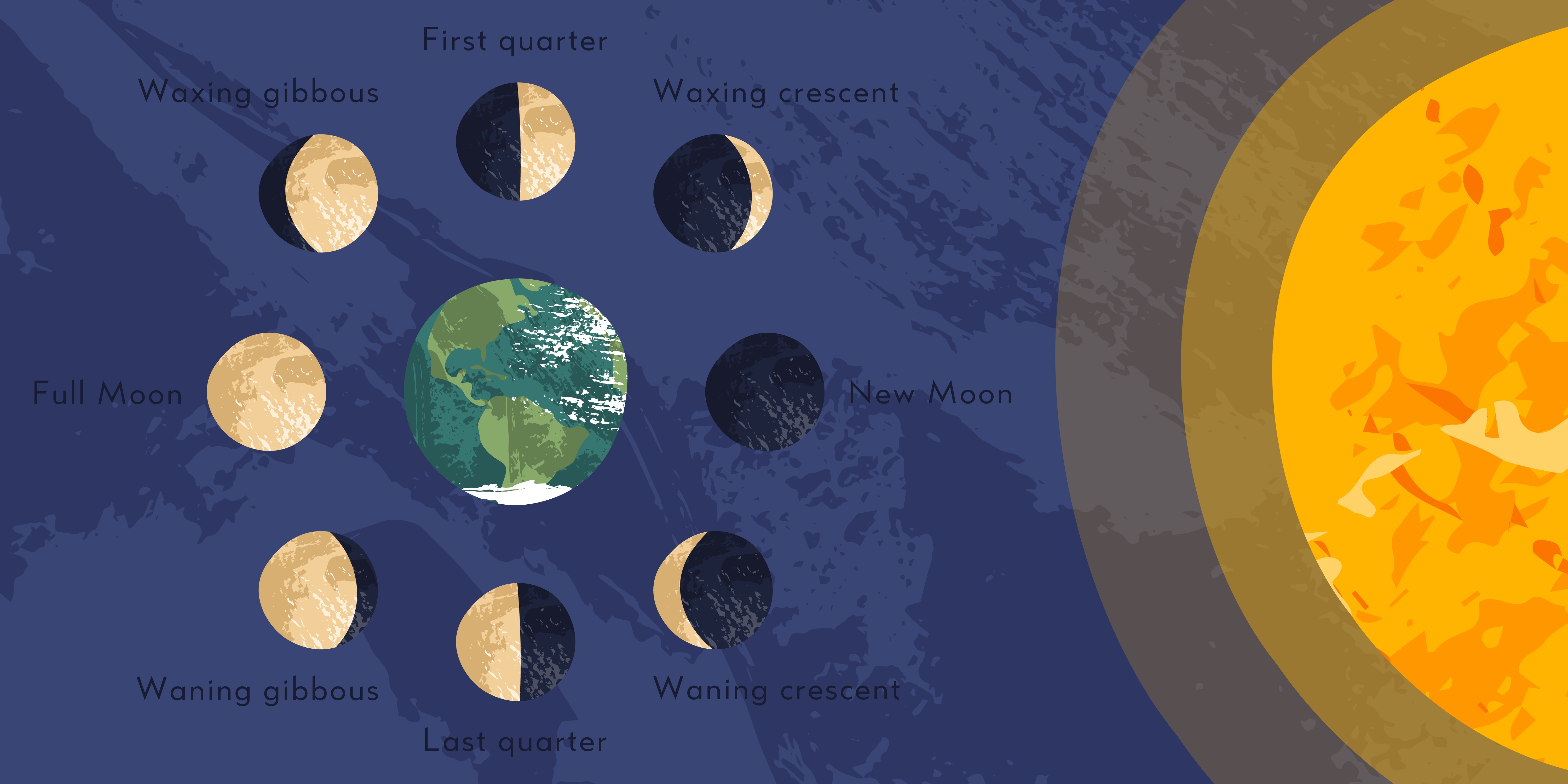If you found yourself on Google’s homepage yesterday, you would have noticed that there was a fun little card game in which you match cute cards and learn about the lunar cycle. This is the name for how the Moon’s appearance changes over a month, or specifically, the 29.5 days of its orbit around the Earth.
The cycle goes from New Moon to New Moon and it is used in many calendars, especially in religious ceremonies from Christianity and Judaism to Islam and Hinduism. The Lunar New Year, celebrated in China and across many Asian nations, comes from a lunar calendar related to the phases of the Moon.
Why does the Moon have phases?
The Moon is tidally locked with our planet, which means it always shows the same face – what we call the near side. The other face is the far side, not the dark side – we are about to see that all the Moon eventually gets sunlight.
As it goes around the Earth, the Moon is at different angles compared to the Sun. At Full Moon, our satellite is roughly behind the Earth and in the opposite direction from the Sun, which means the near side is fully illuminated. But then, around 14 days later is the New Moon, when the Moon is in the same direction as the Sun, so the far side is fully illuminated and the near side is in shade.
Basically, the phases are the portion of the near side of the Moon covered by the Moon’s own shadow. On Earth, it is the same. When we are in the shadow of the Earth, we simply call it night.
The phases are not related to lunar eclipses, where the Moon passes through the shadow of the Earth. They do not happen every month, because the Moon’s orbit is askew compared to the Earth’s orbit around the Sun. Eclipses only happen when the Sun, Earth, and Moon are on the same line – the alignment is called syzygy. They can happen between two to five times a year.
What are the lunar phases?
We start with the New Moon, when the near side is fully dark. Over the next week, the Moon will be in a crescent – a shape that has become synonymous with the Moon itself. Crescent comes from the word crescere – Latin for “to grow” – but it is now used for the shape. The crescent after the New Moon is a Waxing Crescent.
You can tell if the crescent is waxing or waning by the direction of the horns. If they point East, it’s waxing – if they point West then it is waning. If you do not know your East from your West, worry not. In the Northern Hemisphere, the crescent is waxing if it is on the right side of the Moon. In the Southern Hemisphere, the Moon looks upside down so the crescent is on the left.

A schematic view of the phases of the Moon.
Image Credit: Juliasuena/Shutterstock.com
We then get to the Half-Moon also known as the First Quarter, around one week after the New Moon. While the crescent is usually seen during the day until dusk, the First Quarter stretches into the early night. To get to most of the night, we need the Waxing Gibbous moon.
This brings us to the Full Moon, two weeks after the New Moon, when the Moon is fully illuminated. And then the waning phase begins, a mirror image of the waxing process that goes through a Waning Gibbous Moon, the Last Quarter Moon, the Waning Crescent, and finally the New Moon.
Source Link: New Google Game Is A Fun Way To Learn About The Lunar Cycle